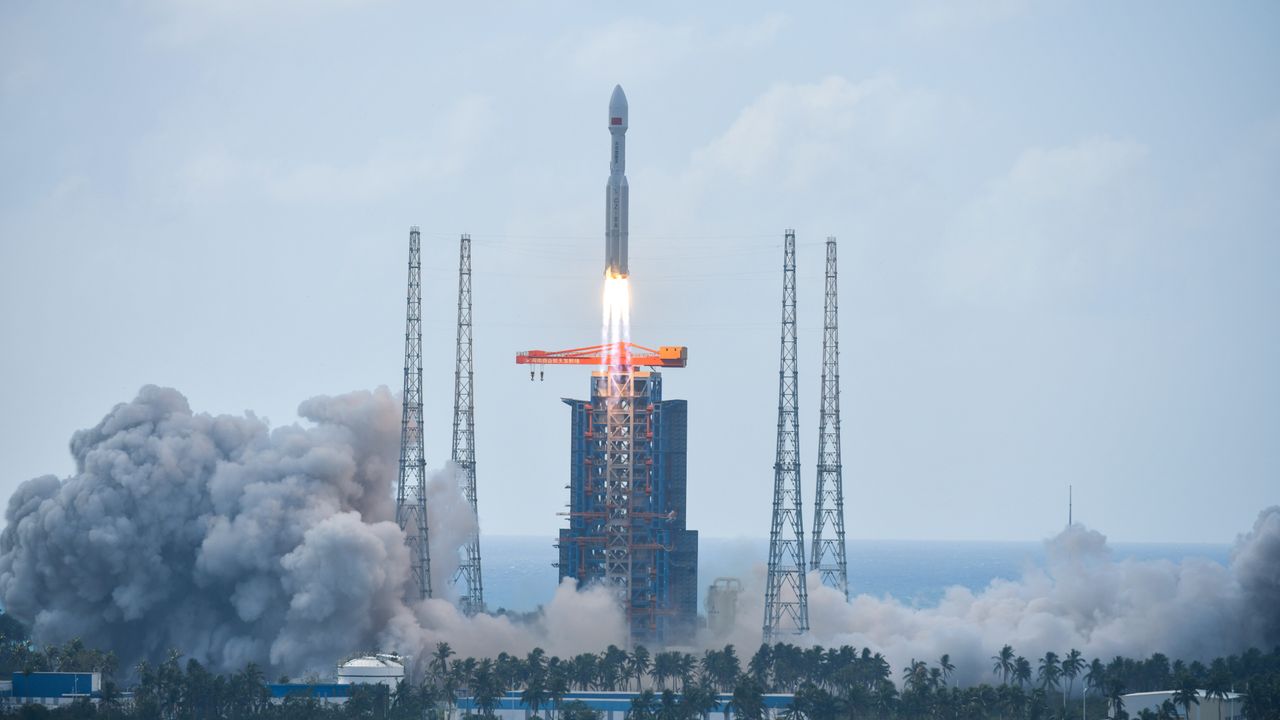Science
China Celebrates Milestone with 600th Long March Rocket Launch

China has marked a significant milestone in its space exploration efforts with the launch of the 600th mission of the Long March rocket family. On October 15, 2025, at 9:33 p.m. EDT (0133 GMT and 9:33 a.m. local time on October 16), a Long March 8A rocket lifted off from the Wenchang Space Launch Center located on Hainan Island. This mission successfully deployed a group of satellites for the Guowang broadband network, further expanding China’s capabilities in satellite internet services.
The Long March rocket program began its journey on April 24, 1970, with the inaugural launch of a Long March 1, which successfully placed China’s first satellite, named Dong Fang Hong 1, into orbit. Over the past 55 years, China has developed more than 20 different variants of Long March rockets, and currently, 16 of these models are active, according to China Daily. Remarkably, the pace of launches has accelerated significantly over the decades.
China Daily reported that it took 37 years for the Long March family to achieve its first 100 launches. In stark contrast, subsequent milestones were reached within increasingly shorter timeframes: the second 100 launches took just 7.5 years, the third was completed in a little over four years, the fourth in two years and nine months, and the fifth in only two years. Most impressively, the most recent 100 launches were accomplished in a mere one year and ten months. The fleet’s overall success rate stands at approximately 97%.
Comparative Milestones in Space Launches
While the Long March rocket family has achieved significant milestones, it is not the most flown rocket series in history. That title belongs to the Soviet/Russian Soyuz line, which has completed over 1,700 missions since its debut in November 1966. Other notable families, such as the Soviet Union’s Kosmos and the American Atlas series, have also surpassed the 600 mark. SpaceX’s Falcon rockets, which include the Falcon 1 (retired in 2009), Falcon 9, and Falcon Heavy, are rapidly approaching this milestone, having conducted more than 570 launches to date. SpaceX has already executed 130 Falcon 9 missions in 2025 alone, showcasing their accelerated launch cadence.
The latest Long March mission launched the 12th batch of Guowang satellites, which are part of a broader initiative to create a vast satellite broadband network known as the “national network.” This ambitious project, operated by the state-run company China Satnet, aims to establish a constellation of approximately 13,000 satellites in low Earth orbit (LEO). Each launch typically carries between eight to ten satellites.
In addition to Guowang, China is also developing another internet constellation called Qianfan, which aims to deploy a similar number of satellites. Both networks are modeled after SpaceX’s Starlink initiative, which currently operates over 8,600 satellites and continues to expand.
China’s advancements in satellite technology reflect a growing commitment to enhancing its broadband capabilities and expanding its presence in the global space industry. As the nation continues to innovate and push the boundaries of its space program, the implications for both domestic and international communications will likely be profound.
-

 Science4 weeks ago
Science4 weeks agoALMA Discovers Companion Orbiting Giant Red Star π 1 Gruis
-

 Top Stories2 months ago
Top Stories2 months agoNew ‘Star Trek: Voyager’ Game Demo Released, Players Test Limits
-

 Politics2 months ago
Politics2 months agoSEVENTEEN’s Mingyu Faces Backlash Over Alcohol Incident at Concert
-

 World2 months ago
World2 months agoGlobal Air Forces Ranked by Annual Defense Budgets in 2025
-

 World2 months ago
World2 months agoMass Production of F-35 Fighter Jet Drives Down Costs
-

 World2 months ago
World2 months agoElectrification Challenges Demand Advanced Multiphysics Modeling
-

 Business2 months ago
Business2 months agoGold Investment Surge: Top Mutual Funds and ETF Alternatives
-

 Science2 months ago
Science2 months agoTime Crystals Revolutionize Quantum Computing Potential
-

 Top Stories2 months ago
Top Stories2 months agoDirecTV to Launch AI-Driven Ads with User Likenesses in 2026
-

 Entertainment2 months ago
Entertainment2 months agoFreeport Art Gallery Transforms Waste into Creative Masterpieces
-

 Business2 months ago
Business2 months agoUS Government Denies Coal Lease Bid, Impacting Industry Revival Efforts
-

 Health2 months ago
Health2 months agoGavin Newsom Critiques Trump’s Health and National Guard Plans









